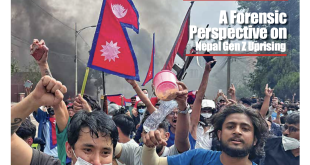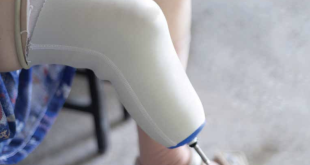Words by Dr. Alok Atreya
In recent times, there have been several disturbing incidents of doctors being attacked and healthcare facilities vandalized in Nepal. Angry mobs have beaten up doctors and destroyed hospital property over allegations of medical negligence and dissatisfaction with treatment outcomes. This has outraged the medical community and raised concerns over the safety of healthcare workers.
Reasons Why Doctors Get Attacked
There are several factors that contribute to the attackers’ mindset:
- Lack of trust and communication between doctors and patients/families. Doctors often fail to properly explain treatment plans, prognosis and potential complications.
- Unrealistic expectations of treatment outcomes. Patients expect miraculous cures in all cases.
- Blaming doctors for natural deaths and unfavorable outcomes. Not understanding that health complications and death can happen despite best efforts.
- Presumption of negligence when adverse events occur, without proper investigation.
- Mob mentality and herd behavior. Angry onlookers join in vandalism without verifying facts.
- Understaffed and overburdened hospitals, leading to delays and dissatisfaction.
- Commercialization of healthcare. Unethical practices like unnecessary procedures for profit erode public trust.
- Lack of legal protections and security for medical staff.
- Impunity and lack of strict action against vandals.
Examples of Assaults on Doctors in Nepal
Some recent examples that show the sorry state of affairs:
- In July 2017, a tumultuous situation unfolded in which patients’ relatives insisted on receiving five lakh rupees, despite being informed and aware that the patient’s kidney needed to be removed for medical reasons. They accused the doctor of organ trafficking. Simultaneously, unfounded rumors and false information spread on social media, alleging that doctors were involved in illegal organ sales, leading to violent mob attacks. Furthermore, lawmakers made insensitive remarks about a case involving kidney removal surgery at a medical college. Consequently, the Nepal Medical Association had to appeal to the Speaker to address this issue with the lawmakers.
- During the Covid lockdown in 2020, three doctors were beaten by police while returning home after duty, despite showing their ID cards. The officers used excessive force without provocation and said “police baton sees no doctor”.
- In February 2022, a doctor on his way to work was baton-charged by police for walking on the road during the President’s convoy. The doctor sustained head injuries.
- In September 2023, two doctors at a Hetauda hospital were beaten up by relatives of a deceased patient a month after the death. The perpetrators alleged negligence.
- In October 2023, a Manipal Hospital doctor was assaulted over the death of a patient. The angry mob vandalized hospital property.
Measures to Curb Violence Against Doctors
To prevent such shameful incidents, some steps need to be taken:
- Enforce strict laws and punishments against vandals like imprisonment and fines.
- Ensure security systems like CCTVs, guards and police aid at hospitals.
- Set up a hospital security force to handle volatile situations.
- Medical associations need to push for doctors’ safety and rights.
- Better communication and consent processes should be followed.
- Hospitals must own up to lapses if any instead of denial.
- Transparent enquiries need to be conducted before blame games.
- The media should verify facts and avoid sensationalism.
- Public awareness campaigns on doctor’s roles and limitations via media.
- Counseling facilities for victims of violence and their families.
The Role of Media in Inciting Violence Against Doctors
The mainstream media also shoulders part of the blame for influencing public sentiment against doctors. Some issues that need highlighting:
- Lack of trained medical journalists. Many reporters covering health stories do not have the skills to correctly interpret medical information.
- Use of improper terminology. Headlines can distort medical facts. For example, “patient saved by passing current to the heart” misrepresents defibrillation.
- Rushing to declare negligence. Stories are often biased, declaring doctors negligent even before proper investigation.
- Sensational headlines. Catchy headlines pronounced doctors guilty without establishing facts.
- Trial by media. News outlets take on the role of judging doctors instead of neutral reporting.
- Competition for breaking news. This results in compromised fact-checking and twisted narratives.
- Likes and views culture. Negative news about doctors’ alleged faults get more engagement on social media.
To remedy this, media houses need to:
- Employ specialized medical journalists or train reporters on health reporting.
- Verify allegations and avoid sensationalism before demonizing doctors.
- Use caution in headlines and avoid technical terms that can be misinterpreted.
- Present balanced stories with perspectives from both sides.
- Allow proper investigations before pronouncing judgement on complex medical cases.
The media as the fourth pillar needs to exhibit sensitivity and responsibility when reporting on doctors and hospitals. They should not contribute to eroding public trust without fair justification.
In conclusion, vandalism and violence against doctors in Nepal has reached alarming levels. However, with collaborative efforts and public education by all stakeholders, more awareness and accountability can emerge. We must create a culture of dialogue, dignified dissent and mutual faith between doctors and society. The safety of our healers should be non-negotiable for a humane and progressive nation.




 Medicosnext
Medicosnext



